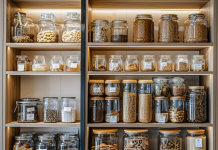You might think that the toilet seat you touch every day is the dirtiest, but that is not the case. Everyday items in the kitchen, car, and other parts of the house can harbor thousands of times more bacteria than a regular toilet.
Everyday items in the house, such as the kitchen and car, can harbor thousands of times more bacteria than a regular toilet.
While a love of cleanliness can lead to a weakened immune system, a compromised intestinal tract, and an increased risk of allergies, a house full of germs is equally worrisome.
More than 65% of colds, 50% of diarrhea, and 80% of food-borne illnesses are transmitted in the home, and common household items are thought to be triggers.
Incorporate these 17 germ-prone items into your cleaning routine to reduce the likelihood of getting sick.
- dishcloths and sponges
The items you use to clean your dishes and pots and pans may actually be making them dirtier. In one study, scientists found that many people create germs in the process of washing dishes and pots.
One study found that a regular dishcloth has 1 million bacteria per square inch and a kitchen sponge has up to 10 million bacteria per square inch. …… That makes it 200,000 times dirtier than a toilet seat.
In addition, a survey of hundreds of U.S. homes found that 7% of kitchen towels were contaminated with MRSA, an antibiotic superdrug. E. coli (found in fecal matter) was found in 89% and E. coli in 25%! What does this tell us?
Sponges, kitchen towels, and rags should be washed every other day on high heat to prevent the growth of bacteria. Also, heating sponges in the microwave for two minutes will kill bacteria. Allow the cloth to dry naturally after use, as insects cannot survive in a dry cloth for more than a few hours.
- Other cleaning devices

In addition to sponges and rags, anything used to remove dirt can be a breeding ground for microorganisms.
Studies have shown that 50% of Hoover brushes carry fecal bacteria and 13% carry E. coli.
These brushes, as well as mop heads, brooms, dustpans, and dusters, should be cleaned or replaced on a regular basis.
Similarly, dishwashers and washing machines may be full of microbes, so monthly deep cleaning is essential.
- Bath towels
Towels can be dangerous items because dead skin cells and moisture can be a breeding ground for bacteria.
All kinds of infections, from colds, flu, and athlete’s foot to serious infections, can be spread through bath towels.
To prevent this, wash and replace all towels at least every three days, use vinegar instead of fabric softener to eliminate odors, and improve the absorbency of the fabric.
- Cutting Boards

A typical cutting board contains 200% more fecal bacteria than a typical toilet lid, highlighting the importance of hygienic cooking practices.
Meat and vegetables should be kept separate and washed thoroughly with hot soapy water after use.
Which cutting board should I choose, wood or plastic? Both can be used hygienically if properly cleaned and stored according to the manufacturer’s instructions.
Old, scratched plastic boards are cesspools of germs. On the other hand, hard wood boards, such as maple wood, are resistant to grooves and scratches that germs love.
Thoroughly cleaning surfaces that come in contact with food, such as refrigerators, microwaves, and cabinets, is also important to get rid of pesky germs.
- Kitchen Sink
Food scraps and sponges can cause bacteria to grow in every nook and cranny of the sink, from the drain to the faucet.
In fact, there may be more than 500,000 bacteria in the kitchen sink. This is about 1,000 times more than in a toilet.
Experts recommend scrubbing sinks and faucets with bleach and water once a day. For those who don’t want to use chemicals, a mixture of tea tree oil, detergent, water, and baking soda can be used to both whiten and disinfect.
- welcome mat
A mat (or two!) While welcome mats are essential for allergen control in the home, they must be cleaned regularly or sprayed with a natural disinfectant in order to do their job and kill the vast amount of bacteria on each mat.
One study found that approximately 96% of shoe soles carry trace amounts of bacteria, including E. coli, found in fecal matter. This is why shoe soles need to be cleaned regularly.
If you rub your feet hard on the welcome mat, a lot of bacteria will stay here. Furthermore, if the shoes are not polished, these bacteria will enter the house.
Do not leave shopping bags or other items on the mat and look around for your keys.
- Toothbrush

Bacteria, fungi, and viruses such as staphylococci and herpes simplex can live on toothbrushes for months, and scientists have found more than 100 million bacteria on just one toothbrush.
When these bacteria multiply in the moist bristles, they can cause oral health problems.
Brushes should be dried between brushings (use a separate toothbrush morning and night if necessary), cleaned regularly with sap-free soap and a few drops of essential oil, and replaced every three months or more often if ill.
Studies have shown that when the toilet seat is lifted and water is flushed, bacteria spews from 25 cm above the seat.
- Makeup brushes
In fact, 72% of women do not wash their makeup brushes and sponges, which has been shown to accumulate dirt and bacteria and cause facial breakouts.
Many also store them in the bathroom, which is not a good idea, just like not leaving your toothbrush behind.
To maintain flawless skin and prevent other ailments, it is essential to wash makeup brushes and sponges once a week. Here are the most natural ways to clean makeup brushes.
Baking soda is a great way to clean brushes. Click here to learn how to use it.
- Leather bag
There is one household item that gets dirtier than toilet seat lids: women’s handbags, especially leather bags. Bacteria were detected in about one-third of the handbags tested.
Fecal bacteria were detected in about one-third of the leather handbags tested. Most prominent were on the bottom of the bags, but they were also found on specific items such as handles, makeup pots, business cards, and coins.
To keep your handbag clean, wipe or wash it regularly and do not leave it on the bathroom floor or welcome mat!
- Coffee Machines

Swab tests of office coffee machines found more than 4 million colonies of harmful bacteria and molds, including E. coli, staphylococci, and streptococci, in the water tank, pod chamber, spout, and tray in more than half of the tests.
Another study conducted by NSF International (a public health and safety organization) found that coffee maker water tanks had higher bacteria counts than bathroom sinks and dog chew toys.
There are other reasons to stop using single-cup coffeemakers.
- light switches
According to a study by Simmons College in Boston, bathroom light switches can harbor as much bacteria as a trash can.
Think that’s bad? At least the germs are yours and are unlikely to make you sick. A University of Houston study testing hotel rooms found that light switches are among the most germ-contaminated devices in public places.
Wiping down and cleaning switches, especially in bathrooms and kitchens, once a week can help control germs.
- Remote Controls
Remote controls are used by everyone in the family and by many guests, but they are rarely cleaned. All those germ-infected fingers get transferred.
Every time that germ-contaminated finger is touched, it transfers a large number of microorganisms, which then lurk and safely multiply between the buttons.
A study of items in hospital rooms found that remote controls had more bacteria on them than ordinary items. Of the bacteria found, the most common was MRSA.
Of the bacteria found, MRSA was only detected on the remote controls and not on the other items tested.
If you wipe your remote control every other week, try wiping the game console closest to you in the same manner.
- telephones

According to a University of Arizona study, a device used for 10 hours a day can harbor 10 times more bacteria than a toilet lid.
No one wants to stick a toilet in their face or bang on the rim for hours a day, but we do it with our phones.
The same goes for laptops, tablets, and keyboards, which should be wiped gently but thoroughly with a soft cloth daily.
Bacteria growth is not the only side effect of smartphones.
- Earphones/Headphones
Whether you wear headphones to work or listen to music at the gym, clean your headphones thoroughly.
According to a study published in the Online Journal of Health and Allied Sciences, frequent use of headphones significantly increases bacterial growth in the ear, with bacteria found in 86% of ear samples tested and 62% of headphone samples! means that if you have bacteria in your ears, you will get an infection.
Other studies have shown that 92% of those who regularly share headphones with friends detected harmful bacteria in their ear buds, while only 8% of those who did not share detected the same bacteria.
- yoga mats and other exercise equipment
Exercise is one of the best things you can do for your health. But choose carefully where you exercise.
According to a new study, the average exercise bike in a public gym contains 39 times more bacteria than a reusable plastic cafeteria tray, a treadmill 74 times more than a faucet, and free weights 362 times more than a toilet seat.
Other studies have shown that yoga mats, which are in direct contact with the skin, are more likely to harbor bacteria than cell phones or airplane seats.
Personal yoga mats are generally fine, but if you bring your mat to the gym or have recently gotten sick, you are at a higher risk of getting sick.
Between uses, spray a mixture of water, vinegar, and essential oils on mats and gym equipment and allow to dry thoroughly.
- Cars
The average commute in the U.S. is 50 minutes, and for many people the car is like an extension of their home. This is reflected in the fact that the steering wheel has nine times as many germs on it as a public toilet seat.
Ten percent of drivers do not clean their cars, especially since many of them eat on the go.
- those hands !

Hands and fingers are a major vector for carrying germs between objects and from person to person. In fact, the average person’s hands are home to about 150 different types of bacteria, some beneficial and some not.
Make it a habit to wash your hands regularly, not only after petting a dog or cutting meat, but also before putting on makeup and before going to bed.
People who wash their hands seven times a day catch about 40% fewer colds than normal people!
To wash your hands thoroughly, use a natural soap such as Castile.
The U.S. Centers for Disease Control and Prevention states that using soap is more effective than water alone because the surfactants in soap lift soil and microbes from the skin.
However, it is wise to avoid antibacterial soaps. There is no evidence that they actually work, and they contain ingredients that encourage antibiotic-resistant bacteria and are harmful to our health.










